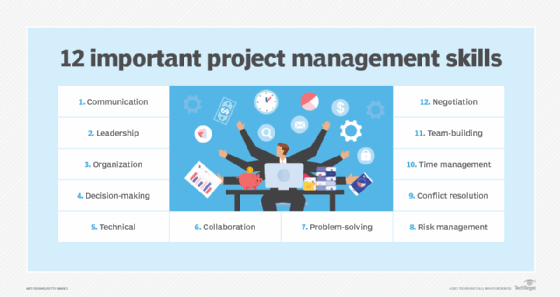
After-action reviews are a great way for your team to be aware of their performance. These reviews can be used to learn from past projects. We will be discussing the benefits, how to conduct them and how to include stakeholders in this article. Listed below are 4 key steps to conduct an effective review.
Learning from past projects
After action reviews allow teams to look back at their projects and identify what needs to be changed. The review should ask "Why were we different from the intended result?" Examine the causes of the differences. Often the answer is internal and can easily be controlled by team members. Sometimes, however there could be an external cause that led to a different outcome. In this case, the team should try to keep the reasons open and transparent rather than fighting about blame.
After action reports are useful for identifying best practices and identifying gaps, as well as lessons learned. They are also helpful in assessing the national response capacity. These reports should indicate the steps required to improve response to future catastrophes. This approach is essential in a culture of continuous improvement.

Members of the team receive benefits
Team members can learn from each other and receive better feedback through after-action reviews. They are a great way to encourage critical thinking, and to discuss the merits as well as the demerits of every project. When performed correctly, they can also generate new best practices for future projects. If it's done properly and consistently, this type of review can prove to be valuable for both the team and the organization. Apart from improving feedback, after-action reviews can be used to identify areas for improvement and determine training programs.
After-action review can be held at almost any place. You don't need to book a space in advance. They can also be as long as you like. They are a great way to build trust among colleagues and overcome negative attitudes. They can also help overcome blame culture as well as the fear of making a mistake. They are also very beneficial for teams, particularly during key stages of projects, as they can apply the lessons to improve their own work immediately. However, they can only be effective when done correctly and with skilled facilitation.
Ways to conduct them
After action reviews can be useful in a number of ways. In addition to getting feedback on how your project is doing, they also provide a chance to discuss why things went wrong and how you could improve. This review should be done at the end or beginning of any new project.
After-action reviews may be conducted for a single project or for an element within a larger project. However, it may be best to conduct an after action review once the project has been completed. Some people may want to evaluate a project or activity just completed, while others prefer to wait to do so. Still others may be worried that doing an after-action review will take time away from working on a project or initiative.

Stakeholders are involved
After-action reviews are a powerful tool to capture lessons from an activity or project. After-action reviews are a way to ensure that the lessons learned from a project or activity are shared with the rest. These reviews help to identify improvement areas and allow for continuous learning.
Stakeholders involved in an after action review can include team members, customers, or project executives. The preparation phase involves gathering information and discussing it with the team. The final report should explain what happened and how to improve it.
FAQ
What are management principles?
Management Concepts are the management principles and practices that managers use in managing people and resources. These topics include job descriptions, performance evaluations and training programs. They also cover human resource policies, job description, job descriptions, job descriptions, employee motivation, compensation systems, organizational structures, and many other topics.
What is a basic management tool used in decision-making?
A decision matrix is a simple but powerful tool for helping managers make decisions. They can think about all options and make informed decisions.
A decision matrix can be used to show alternative options as rows or columns. This allows one to see how each alternative impacts other options.
The boxes on the left hand side of this matrix represent four possible choices. Each box represents a different option. The top row shows the status quo (the current situation), and the bottom row shows what would happen if nothing was done at all.
The effect of Option 1 can be seen in the middle column. In this case, it would mean increasing sales from $2 million to $3 million.
The effects of options 2 and 3 are shown in the next columns. These are good changes, they increase sales by $1million or $500,000. They also have negative consequences. Option 2, for example, increases the cost by $100 000 while Option 3 decreases profits by $200 000.
Finally, the last column shows the results of choosing Option 4. This means that sales will decrease by $1 million.
A decision matrix has the advantage that you don’t have to remember where numbers belong. You can just glance at the cells and see immediately if one given choice is better.
This is because the matrix has already taken care of the hard work for you. Simply compare the numbers within the cells.
Here's an example of how you might use a decision matrix in your business.
You want to decide whether or not to invest more money into advertising. This will allow you to increase your revenue by $5000 per month. But, you will also incur additional expenses of $10 thousand per month.
The net result of advertising investment can be calculated by looking at the cell below that reads "Advertising." It is 15 thousand. Advertising is more valuable than its costs.
What's the difference between a program and a project?
A project is temporary, while a program lasts forever.
Projects usually have a goal and a deadline.
It is often performed by a team of people, who report back on someone else.
A program often has a set goals and objectives.
It is often implemented by one person.
Six Sigma is so popular.
Six Sigma is easy and can deliver significant results. Six Sigma also gives companies a framework for measuring improvement and helps them focus on what is most important.
Why is it so hard to make smart business decisions?
Complex systems with many moving parts are the hallmark of businesses. Their leaders must manage multiple priorities, as well as dealing with uncertainty.
Understanding the impact of these factors on the system is crucial to making sound decisions.
You must first consider what each piece of the system does and why. Then, you need to think about how these pieces interact with one another.
Ask yourself if there are hidden assumptions that have influenced your behavior. You might consider revisiting them if they are not.
For help, ask someone else if you're still stumped after all the above. They may see things differently from you and have insights that could help you find a solution.
What is the difference between TQM and Six Sigma?
The main difference between these two quality-management tools is that six-sigma concentrates on eliminating defects while total QM (TQM), focuses upon improving processes and reducing expenses.
Six Sigma is a method for continuous improvement. It emphasizes the elimination of defects by using statistical methods such as control charts, p-charts, and Pareto analysis.
This method attempts to reduce variations in product output. This is done by identifying and correcting the root causes of problems.
Total quality management includes monitoring and measuring all aspects of an organization's performance. It also involves training employees to improve performance.
It is used to increase productivity.
Statistics
- UpCounsel accepts only the top 5 percent of lawyers on its site. (upcounsel.com)
- The BLS says that financial services jobs like banking are expected to grow 4% by 2030, about as fast as the national average. (wgu.edu)
- Hire the top business lawyers and save up to 60% on legal fees (upcounsel.com)
- Your choice in Step 5 may very likely be the same or similar to the alternative you placed at the top of your list at the end of Step 4. (umassd.edu)
- As of 2020, personal bankers or tellers make an average of $32,620 per year, according to the BLS. (wgu.edu)
External Links
How To
How can you implement the Kaizen technique?
Kaizen means continuous improvement. The Japanese philosophy emphasizes small, incremental improvements to achieve continuous improvement. This term was created by Toyota Motor Corporation in 1950. It's where people work together in order to improve their processes constantly.
Kaizen is one of Lean Manufacturing's most efficient methods. Kaizen is a concept where employees in charge of the production line are required to spot problems during the manufacturing process before they become major issues. This will increase the quality and decrease the cost of the products.
Kaizen is an approach to making every worker aware and alert to what is happening around them. Correct any errors immediately to avoid future problems. Report any problem you see at work to your manager.
Kaizen follows a set of principles. Always start with the end product in mind and work our way back to the beginning. For example, if we want to improve our factory, we first fix the machines that produce the final product. We then fix the machines producing components, and the machines producing raw materials. Then we fix the workers, who directly work with these machines.
This is why it's called "kaizen" because it works step-by-step to improve everything. Once the factory is fixed, we return to the original site and work our way back until we get there.
How to measure kaizen's effectiveness in your business is essential to implement it. There are several ways to determine whether kaizen is working well. Another way to determine if kaizen is working well is to look at the quality of the products. Another way is determining how much productivity increased after implementing kaizen.
Another way to know whether kaizen is working is to ask yourself why did you decide to implement kaizen. It was because of the law, or simply because you wanted to save some money. Did you really believe it would lead to success?
Let's say you answered yes or all of these questions. Congratulations! Now you're ready for kaizen.